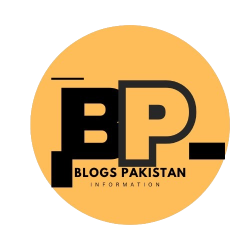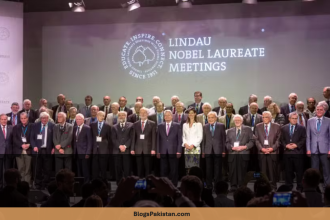Foreign Direct Investment (FDI) is often seen as a barometer of a nation’s economic health—a sign of global confidence in its policies, stability, and growth potential. For Pakistan, March 2025 delivered a harsh reality check: FDI plummeted by 91% compared to the same month last year, raising alarms about the country’s economic trajectory. While the short-term data paints a grim picture, a deeper dive reveals nuanced trends, regional partnerships, and sector-specific opportunities that could shape Pakistan’s recovery.
The March 2025 FDI Crash: By the Numbers
A Historic Decline in Net Investment
In March 2025, Pakistan’s net FDI stood at a mere 26million,astaggering9126million,astaggering91294 million recorded in March 2024. This collapse marks the sharpest year-on-year decline in over a decade, underscoring mounting investor caution.
Inflows vs. Outflows: A Double Whammy
- Shrinking Inflows: FDI inflows fell to 177millioninMarch2025—down49177millioninMarch2025—down49344 million the previous year.
- Surge in Outflows: Outflows skyrocketed by 200%, reaching 151millioncomparedto151millioncomparedto50 million in March 2024.
This imbalance suggests not only waning foreign interest but also existing investors pulling capital out due to perceived risks.
The 9-Month FY25 Paradox: Growth Amid Crisis
While March’s figures dominated headlines, cumulative data for the first nine months of FY25 (July 2024–March 2025) reveals a more complex story.
A 14% YoY Increase in Net FDI
Net FDI rose to 1.64billionduring9MFY25,upfrom1.64billionduring9MFY25,upfrom1.44 billion in the same period last year. This growth, however, masks stark monthly volatility and reliance on a few key partners.
Top Investor Nations: China’s Dominance Continues
- China: $986.7 million (60% of total FDI)
- Hong Kong: $196 million
- UK: $191.8 million
- Switzerland: $152.6 million
- Canada: $98.1 million
China’s overwhelming share highlights Pakistan’s dependence on its strategic ally, particularly through initiatives like the China-Pakistan Economic Corridor (CPEC).
Sectoral Breakdown: Power Sector Reigns Supreme
Energy Demands Drive Investments
The power sector attracted $863.5 million in FDI during 9MFY25, accounting for 53% of total inflows. This trend aligns with Pakistan’s push to address chronic energy shortages and transition to renewable sources, including solar and hydropower projects.
Financial Services and Oil & Gas: Steady Contributors
- Financial Business: $533.4 million (33% of FDI)
- Oil & Gas Exploration: $219.7 million
The financial sector’s appeal reflects digital banking expansions and fintech innovations, while oil & gas investments target untapped reserves in provinces like Khyber Pakhtunkhwa.
Diagnosing the Drop: Why Investors Are Hesitant
Global Headwinds
- Geopolitical Tensions: Regional instability, particularly along Pakistan’s western border, has deterred risk-averse investors.
- Economic Slowdown: Global recession fears have tightened capital flows to emerging markets.
Domestic Challenges
- Currency Volatility: The rupee’s depreciation eroded returns for foreign investors.
- Policy Uncertainty: Delays in finalizing agreements under CPEC Phase-II and tax reforms created ambiguity.
- Energy Pricing Disputes: Conflicts over IPP (Independent Power Producer) tariffs discouraged further commitments in the power sector.
Regional Comparisons: How Pakistan Stacks Up
While Pakistan grapples with FDI volatility, regional competitors like India and Bangladesh report steadier inflows:
- India: FDI surged by 22% in Q1 2025, driven by tech manufacturing and renewable energy.
- Bangladesh: Garment exports and infrastructure projects boosted FDI by 18%.
Pakistan’s struggle to diversify beyond CPEC-linked investments puts it at a disadvantage in attracting multilateral ventures.
Pathways to Recovery: Rebuilding Investor Confidence
Policy Reforms: Speed and Transparency
- Fast-Tracking CPEC Projects: Addressing bureaucratic delays in energy and transport initiatives could restore Chinese investor trust.
- Tax Incentives: Offering tiered tax breaks for sectors like IT and agro-processing could lure smaller investors.
Strengthening Global Partnerships
- GCC Engagement: Targeting Gulf nations for oil refinery collaborations and renewable energy funding.
- EU Trade Agreements: Leveraging GSP+ status to attract European SMEs in textiles and agriculture.
Tech-Driven Opportunities
- Startup Ecosystem: Promoting Pakistan’s tech hubs (Karachi, Lahore) for venture capital in fintech and e-commerce.
- Digital Infrastructure: Expanding broadband access to support IT outsourcing and remote work solutions.
The Human Impact: Jobs, Growth, and Stability
FDI isn’t just about capital—it’s a lifeline for employment and innovation. The March 2025 slump risks:
- Stalled Energy Projects: Delays in power plants could prolong load-shedding, affecting industries.
- Tech Brain Drain: Skilled workers may seek opportunities abroad if local startups lose funding.
Looking Ahead: Balancing Crisis and Opportunity
Pakistan’s FDI trajectory hinges on addressing immediate concerns while capitalizing on long-term strengths. From harnessing its youth demographic for tech-driven growth to resolving energy disputes, the nation stands at a crossroads. While March 2025’s numbers are sobering, the 9MFY25 data and sectoral resilience offer glimmers of hope—if policymakers act decisively.










